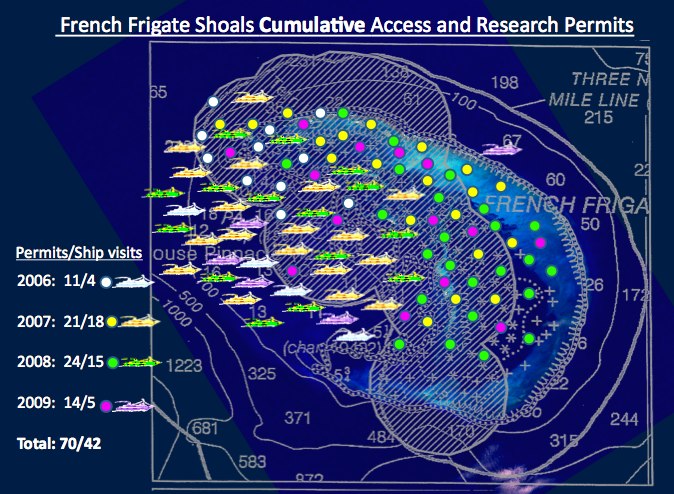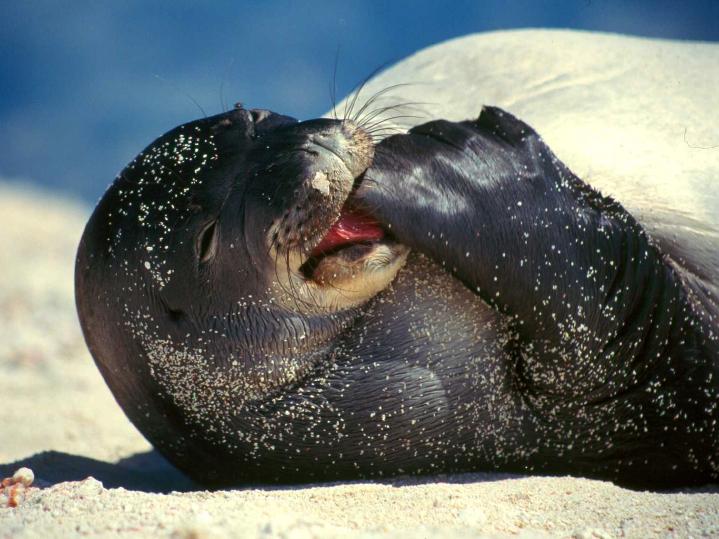Blog
News, updates, finds, stories, and tidbits from staff and community members at KAHEA. Got something to share? Email us at: kahea-alliance@hawaii.rr.com.
That Deafness? It's Only Temporary.
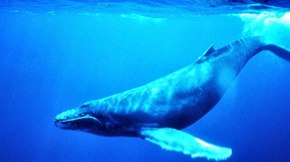
Many of you followed the sonar lawsuit from 2008, in which KAHEA, in partnership with Earthjustice and other local, national and international NGOs, sued the U.S. Navy over its proposed expansion of military exercises around Hawai’i, including the Northwestern Hawaiian Islands. The State of Hawai’i, at our urging, also asked the Navy to comply with laws protecting endangered species in Hawai’i. Not surprising, the Navy refused.
Now, there’s another round of public scoping hearings for more sonar and more detonations. But don’t worry about those whales. According to the U.S. Navy, the deafness caused by underwater explosions and sonar is only temporary.
An update on U.S. Navy training in Hawaiian waters, from the Hawaii Independent:
The U.S. Navy announced its intent to prepare an Environmental Impact Statement (EIS) and Overseas EIS (OEIS) relating to military training and research, including sonar and detonating explosives, within the Hawaii-Southern California Training and Testing (HSTT) study area.
Public scoping meetings throughout Hawaii have been scheduled to hear comments. Last year, the federal government issued authorization to the U.S. Navy to impact whales and dolphins while conducting sonar training exercises around the main Hawaiian Islands for five years, Environmental News reported.
The letter of authorization and accompanying rules allow for injury or death of up to 10 animals of each of 11 species over the five years covered by the regulations. The Navy requested authorization under the Marine Mammal Protection Act because the mid-frequency sound generated by tactical active sonar, and the sound and pressure generated by detonating explosives, may affect the behavior of some marine mammals or cause what the Navy calls “a temporary loss of their hearing.”
Mid-frequency sonar can emit continuous sound well above 235 decibels, an intensity roughly comparable to a rocket at blastoff, according to Environmental News.
The sonar blasts travel across hundreds of miles of ocean to reveal objects, such as submarines, underwater. The National Marine Fisheries Service (NMFS) will be a cooperating agency in preparation of this EIS and OEIS. In January 2009, the NMFS’s ruling stated: “After reviewing the current status of the endangered blue whale, fin whale, humpback whale, sei whale, sperm whale, Hawaiian monk seal, green sea turtle, leatherback sea turtle, loggerhead sea turtle, and Pacific ridley sea turtle, … [Navy training activity in the Hawaii Range Complex] each year for a five-year period beginning in January, 2009, are likely to adversely affect but are not likely to jeopardize the continued existence of these threatened and endangered species under NMFS’s jurisdiction.”
While Earth Justice wants the Navy to stop using sonar until it can avoid serious injury to marine mammals, the environmental group recommends several things the Navy can do to minimize the harm to marine life: Impose seasonal and geographical limitations, avoid nursing areas, ramp sonar up slowly, avoid areas that were created specifically to protect endangered marine life, create a 25-mile safe haven distance from shorelines, avoid steep-sloping seamounts that provide important habitat for many marine species, prohibit testing at night or other times of low visibility, and adopt protocols similar to those of other naval forces to minimize the impact on marine wildlife.
The Navy’s latest proposed action is to conduct training and testing activities within the at-sea portions of existing Navy training range complexes around the Hawaiian Islands and off the coast of Southern California. Training activities, such as sonar maintenance, explosives, and gunnery exercises, may occur outside of Navy operating and warning areas. In 2009, the Navy instituted mitigation measures relating to sonar that include stationing lookouts, adjusting sonar decibel levels when marine animals are detected within 200 to 1,000 yards, and increased visual and aerial surveillance for marine life. The HSTT study area combines the at-sea portions of the following range complexes: Hawaii Range Complex, Southern California Range Complex, and Silver Strand Training Complex. The existing western boundary of the Hawaii Range Complex is being expanded 60 miles to the west to the International Dateline.
The HSTT study area also includes the transit route between Hawaii and Southern California as well as Navy and commercial piers at Pearl Harbor and in San Diego, CA where sonar may also be tested.
Public scoping meetings will be held between 4:00 p.m. and 8:00 p.m.
- Tuesday, August 24, 2010, Kauai Community College Cafeteria, 3-1901 Kaumualii Highway, Lihue, HI.
- Wednesday, August 25, 2010, Disabled American Veterans Hall, Weinberg Hall, 2685 North Nimitz Highway, Honolulu, HI.
- Thursday, August 26, 2010, Hilo High School Cafeteria, 556 Waianuenue Avenue, Hilo, HI. 6. Friday, August 27, 2010
- Maui Waena Intermediate School Cafeteria, 795 Onehee Avenue, Kahului, HI.
The meetings will consist of an informal, open house session with informational stations staffed by Navy representatives. Additional information concerning meeting times is available on the EIS and OEIS website at http://www.HawaiiSOCALEIS.com. The scoping process will be used to identify community concerns and local issues to be addressed in the EIS and OEIS. All comments provided orally or in writing at the scoping meetings, will receive the same consideration during EIS and OEIS preparation. Written comments must be postmarked no later than September 14 and should be mailed to: Naval Facilities Engineering Command, Southwest, 2730 McKean Street, Building 291, San Diego, CA 92136-5198, Attention: Mr. Kent Randall—HSTT EIS/OEIS.
Exemptions Gone Wild
Generally, under today’s environmental laws, certain kinds of projects have to do an environmental review (Like an EIS). Other kinds of projects can be exempted. The BP oil spill at Deepwater Horizon has been a sobering reminder of why these kinds of environmental reviews and exemptions are so critical. (Can you believe THIS was exempted from EIS?)
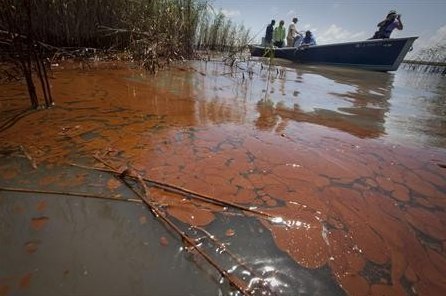
Today, DLNR is proposing a “wild laundry list” of EIS exemptions for DLNR-managed lands, from building new roads to chemical herbicides. That’s 57 pages (fifty-seven!) of exemptions. Yeesh. We are asking the Office of Environmental Quality and Control (OEQC) to send DLNR back to the drawing board. If you or your organization is interested in participating in a group letter to OEQC or just want to know more about this issue, please contact Marti at marti@kahea.org by Friday morning.
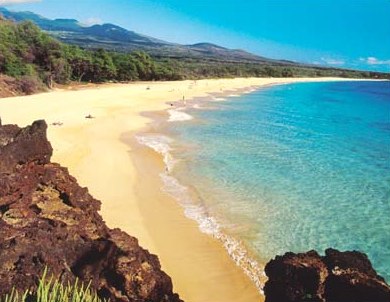
Pushing for the protections monk seals (and humans) need
Like a glove across the face, KAHEA and the Center for Biological Diversity sent a Notice of Intent to Sue yesterday warning federal regulators to expedite the critical habitat designation for Hawaiian monk seals… or else. Critical habitat is the backbone of the Endangered Species Act. It is the mechanism for shepherding species back from the verge of extinction. Over two years ago, we petitioned the National Marine Fisheries Service to expand the critical habitat designation for the highly endangered Hawaiian monk seal. And NMFS agreed the seal needed more habitat to thrive. Yet, more than a year since they agreed with us, NMFS is not any closer to protecting vitally important nearshore areas and deepwater foraging grounds for the seal.
Not surprising, in that year, Hawaiian monk seals have only slipped closer to extinction with a 4% annual decline. In 2009, monk seals had the lowest pupping rate in the past 10 years, with every location in the Northwestern Hawaiian Islands experiencing declines. In 2009, only 119 seal pups were born in the Northwestern Hawaiian Islands, compared with 138 in 2008. But in the Main Hawaiian Islands, birth rates seem more promising with 15 monk seal pups born including six pups on Moloka’i, five on Kaua’i, and two each on O’ahu and Maui. The federal government must act now to update the current protections for Hawaiian monk seals to ensure deepwater foraging areas of the NWHI are protected, as well as the areas being re-populated in the main islands.
Protecting this habitat for monk seals will also protect these areas for humans, too. Subsistence fishers and monk seals benefit from the same protections — where monk seals are protected, shoreline and nearshore non-commercial fishers are also protected. By expanding critical habitat for monk seals, we can ensure subsistence fishing grounds are not built over by hotels, highways, and industrial fish farms.
A little explanation.
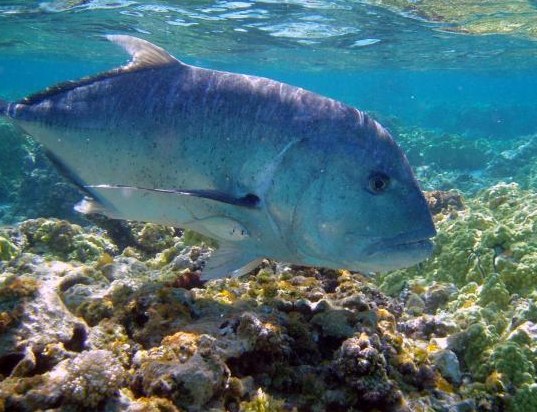
From Miwa:
I wrote the little explanation below the other day to Uncle Bill Aila, Jr. in response to an email from him. Though it was written for him, I thought I would share it here on our blog, as others may have questions about KAHEA’s support of Na Koa and Koani Foundation in their request for intervention on World Heritage Site designation for the Northwestern Hawaiian Islands:
First and foremost, KAHEA fully supports legal protections promulgated in the State Refuge and the Monument, including the prohibition on commercial fishing within 50 miles of the islands. We believe deeply in a vision of full conservation of the NWHI, as it represents a significant place of refuge for cultural practice, for native endangered species, and for some of the last predator-dominated reefs remaining on the planet.
However, as you know well (!), we have had, and continue to have, some deep concerns about management in the NWHI by the state and feds. Including:
1) Lack of meaningful prioritization for activities in the NWHI, or of analysis of cumulative impacts (taking into account past activity–including legacy over-exploitation and military activity)
2) Weak and disorganized permitting – “unified” permit process not really very unified in implementation
3) No enforcement plan, failure to push for accountability/mitigations/appropriate limits on military activity in the NWHI
4) Lack of funding/focus on cultural access or study
5) No public advisory entity established for Monument and limited venues/opportunities for public participation on decision-making
6) Lack of collaboration: Monument Management Board has not met in nearly six months? Multi-agency commitment to integrated ecosystem management getting lost on turf wars.
At the heart of this, is an exhibited inability for the co-trustees to collaborate effectively. Officials on the Federal side have acknowledged “some deep conflicts” which the Federal agencies are “struggling to resolve.” Though many are eager to take credit for the protections in place for the NWHI, implementation has lacked the political will to “make it work.”
We support Na Koa and Koani Foundation in their request for intervention for the following reasons:
In many communities, the decision to pursue a WHS designation comes only after years of conversation, debate, struggle and consultation. We are concerned that Native Hawaiian consultation on the WHS proposal was indeed inadequate, conveying unified support, when this is not in fact the case.
Further, World Heritage designation does not offer any additional enforceable protections for the NWHI. Indeed, over 30 World Heritage Sites are currently threatened with de-listing, due to poor management by those in charge, including the Belize Barrier Reef System and the Galapagos Islands. In an article written this past February, Goldman Prize winner John Sinclair heavily criticized Australian officials for neglecting conservation management for his beloved Fraser Island following its World Heritage designation, in favor of facility upgrades, and recreation management (e.g. widening roads) at the expense of “natural resource management, — environmental monitoring of wildlife and ecosystems, fire management, weed control, and quarantine.”
In many cases, this designation is used to promote tourism to a site (See http://www.expedia.com/daily/sustainable_travel/world_heritage/default.asp), which ironically increases the tourism impacts to the site intended for protection.
What World Heritage designation does offer is prestige and publicity. Prestige and publicity is not a need for the NWHI, as a great deal of public attention has already been placed on the protection of the NWHI. Indeed, a TIME magazine’s feature Earth Day article (Bryan Walsh) on oceans just last week noted NWHI protections as hopeful action in an otherwise pretty dismal picture of world-wide ocean resources management.
What is needed is not more attention or prestige. What is needed is accountable, integrated and cooperative management that puts the resource and the rightholders first.
Let’s do that–let’s get there–and we’ll have a place that can really be held up as an example to the world of how ocean conservation that strongly protects cultural practice can be done well. This is our hope, and vision ahead of our efforts.
Antifouling Causes Paler Fish
From Marti:
Study in Sweden found that new antifouling chemical medetomidine (used to prevent the buildup of barnacles, seaweed/marine organisms on the cages/nets of open water fish farms) causes paler fish, affecting the skin cells that contain dark pigment. It also appears to affect a detoxifying enzyme in the fish’s livers, which could result in lessened ability to filter environmental toxins (like PCBs or mercury!)
Looks like, in the race to replace TBT to keep fish farm nets and boat bottoms critter-free, it’s back to the drawing board.
See full article at: http://www.thefishsite.com/fishnews/12238/antifouling-causes-paler-fish
Thousands March Against Fish Farms in B.C.

Close to 5,000 people gathered this past weekend, the culmination of a 500 km march, led by biologist Alexandra Morton, to protest open ocean fish farms and the impacts they are having on wild fish in British Columbia. As we open our doors to open ocean farms for ahi in Hawai’i, do we have something to learn from their experience in B.C.?
See video: http://www.globaltvbc.com/video/index.html?releasePID=tVSow1MygokzZOHDBa99s317z8BmiyTn
From Dr. Neil Frazer, a UH Professor (SOEST) born and raised in British Columbia:
In BC, native peoples (called “First Nations”) are very angry with farms. Near farms they have lost their subsistence fishing, their salmon and clams.
Many BC tourism companies are very unhappy because sportfish and wildlife have greatly declined near farms. Farmers have shot many marine mammals.
Salmon farming in BC is controlled by two large Norwegian companies: Marine Harvest and Cermaq.
First Nations from BC have gone to Norway twice to plead with the Norwegians to move their farms. Imagine native Hawaiians having to fly to Norway some day to plead for removal of farms.
Many lawsuits against sea-cage farmers are now in the BC courts. Solid citizens are marching down the highways in protest. It’s a mess.
Problems with sea-cage farms are not confined to BC. Many people in other countries are very unhappy with sea-cage fish farms.
Hawaii should look into it. Why import the mistakes of other countries?
State finally getting it right for Northwestern Hawaiian Islands... -ish.
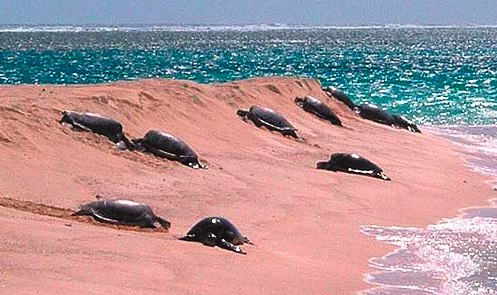
Last week, the Board of Land and Natural Resources held a special meeting to consider several permit applications from HIMB researchers for activities in the Northwestern Hawaiian Islands, Papahānaumokuākea. After several years of public testimony at every permit hearing — and even finally, a lawsuit! – the Land Board and its staff finally admitted: a cumulative impact assessment IS needed to understand the affects of harmful human activity on this extremely fragile place BEFORE permits are issued to allow prohibited activities. Hallelujah!
Unfortunately, knowing you were wrong and getting it right are not the same thing.
At the meeting, staff gave a very technical presentation about past permitted activities, how they are documented, and what the likely affects are. Then representatives from the applicants — Hawai’i Institute of Marine Biology (HIMB) — testified to studies they have conducted on themselves to assess the impact they are (not) having on the environment. These are good and noble acts that should be continued, but do not get at the heart of the issue over the issuance of permits for taking species, dumping waste water, anchoring, constructing, and dredging activities in the largest NO-TAKE marine reserve in Hawai’i. These activities have the potential to harm the very thing that is trying to be studied (and ostensibly saved). Yet? Still no cumulative impact assessment. Still no environmental assessment.
The researchers and the staff obviously have some information about the impacts of human activities in the NWHI. Why not put that together into an environmental impact statement and release it for public comment?
Permits are required because the activities requested are prohibited. Permission is to be given for prohibited activities when they are necessary for conservation, management and cultural perpetuation. This is at the heart of a “permit” system.
The issue: We are supposed to have a public process to evaluate what activities are really needed, and balance them against the cumulative impacts. How can we do this without the legally required environmental assessment (EA)? Or for that matter, without a public process?
All the while granting of permits continues to be driven by availability of grant/Federal dollars, rather than the actual need for the activity.
Today, decisions for the Monument are being made in the dark–and it shows. We continue to ask: open up the Monument to transparent, accountable decision making for this public trust. Hold public meetings of the Monument Management Board, where permitting decisions can be made in the light of day. Really, what is there to hide?
